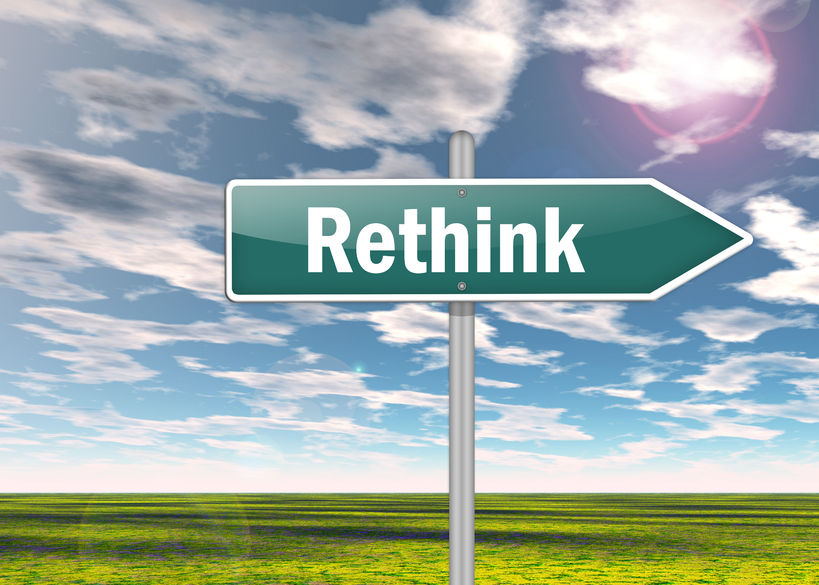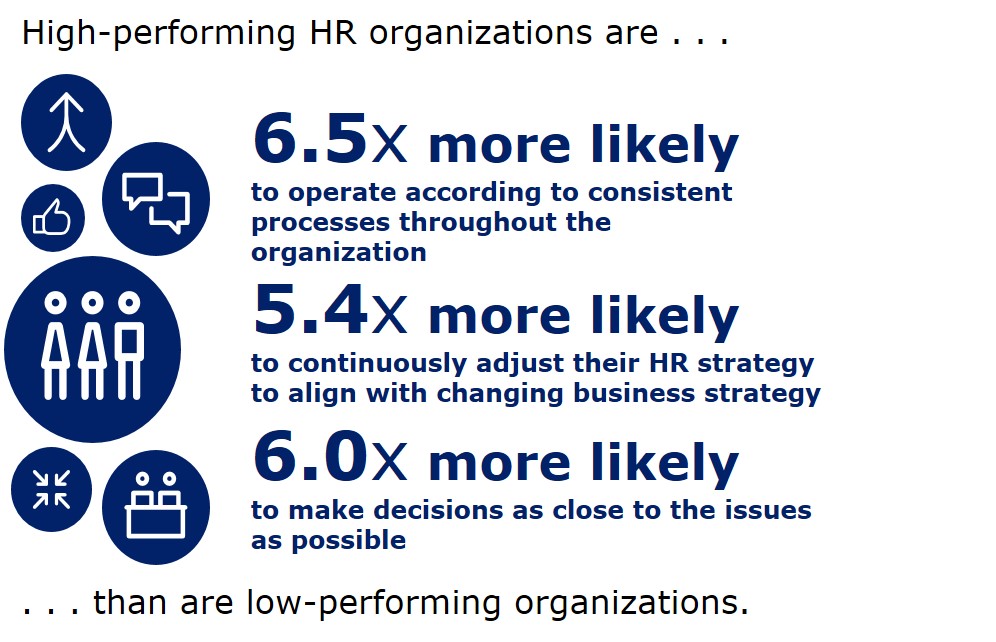By:
Organizational structure is a hot topic. Increasing customer expectations, team-centric operations, and the demands of staying ahead in a time of hypercompetition and massive change are forcing a much-needed rethink of how businesses structure themselves. The old hierarchal models designed for a “predict, command, and control” way of working no longer work and are putting many businesses at risk of disruption or worse. The numbers are astonishing. Fully 88 percent of companies believe they need to redesign their organizations to succeed in the digital age, and 90 percent are exploring or designing the “organization of the future.”[1] Based on these trends, Prediction 1 for 2018 is that agile organization models will start to go mainstream.[2]
But what about HR?
While HR is beginning to refocus its purpose around designing worker experiences and leading digital transformation[3], businesses have been using essentially the same HR structure for more than 20 years. Although this model has served us very well, helping HR gain a proverbial “seat at the table” and professionalizing the function, it was developed for a very different time, with different requirements and challenges, for the people side of business.
It’s time for a change, and savvy HR leaders know it. In fact, “HR structure” is the most common search term on the Bersin platform, outpacing the next hottest term, “diversity and inclusion,” by almost 60 percent.
The time has come for a radical rethink of HR structure.
Signs of change
Through our research, and in conversations with HR leaders from all industries and around the globe, we have started to recognize some early evolutions of HR structure, governance, and operations. One of these early evolutions is the increasing adoption of a “fit-for-purpose” HR operating model. Fit for purpose simply means:
Fitting the core elements of HR models to an organization’s unique purpose though a series of strategic design choices associated with business and people strategies, market dynamics, organizational culture, and HR operations.
We have found that High-Impact HR develops, structures, and operates a fit-for-purpose HR to deliver consistent and flexible experiences, tools, and services throughout the business, and to help remain ahead of emerging trends in work, the workplace, and the workforce.[4]
Source: Bersin, Deloitte Consulting LLP, 2017.
Fit-for-purpose HR is driven in part by a series of strategic design choices, such as whether you should centralize or distribute your HR resources to best serve your organization’s specific strategies, or whether you should differentiate or standardize HR services across the enterprise.[5]These strategic design choices provide a framework to steer the creation of meaningful and specific guiding principles for a High-Impact HR operating model and its resulting structure. Each organization’s strategic design choices are unique. Fit for purpose is the opposite of one size fits all.
Evolution is slow—digital is fast
The evolution mentioned previously represents an important early step in redesigning HR structure, but digital transformation is happening extremely quickly. And remember, digital transformation is more than just applying technology to automate existing processes or to expand capabilities. It’s about using that technology to create new ways of working and of delivering value to the organization. This includes new ways of structuring the people function in organizations.
What will HR look like in a couple of years, when robotic and cognitive automation replicate human actions and judgment at tremendous speed, scale, and quality and lower cost relative to now? What are the possibilities of HR structure when software is handling the bulk of activities related to employee data and self-service, benefits, candidate screening, and onboarding?
We are already seeing some movement of transactional activities away from business HR and centers of excellence into HR shared services and operational centers. And we haven’t even discussed the role and structure of HR when it comes to workplace platforms, the gig economy, and agile, multidisciplinary teams.
It’s an exciting time to be in HR. We have the once-in-a-lifetime opportunity to define how HR works, how it looks, and how it operates for generations to come. We invite you to join us on this journey by participating in our High-Impact surveys and sharing your stories with us.
[1] 2017 Deloitte Global Human Capital Trends: Rewriting the rules for the digital age, Deloitte Consulting LLP and Deloitte University Press, 2017, https://www2.deloitte.com/us/en/pages/human-capital/articles/introduction-human-capital-trends.html.
[2] Predictions for 2018: Embracing Radical Transparency, Bersin, Deloitte Consulting LLP, 2018.
[3] High-Impact HR, Bersin, Deloitte Consulting LLP / Jeff Mike, 2016.
[4] Ibid.
[5] “The High-Impact HR Operating Model,” Deloitte Development LLC / Arthur H. Mazor, Kraig Eaton, Filip Gilbert, Erica Volini, Michael Stephan, Mark Maclean, Gary Johnsen, Roberta Yoshida, Michael Gretczko, and Richard Coombes, 2017, https://www2.deloitte.com/global/en/pages/human-capital/articles/high-impact-hr.html.
JEFF MIKE
Jeff Mike leads Bersin by Deloitte’s HR Operations and Service Delivery research He integrates rigorous research approaches with his extensive experience leading HR functions to engage diverse practitioners and to generate actionable knowledge Jeff also teaches HR to business people and business to HR people, formally at the graduate and undergraduate levels, and informally in organizations through his boundary spanning, consultative approach to problem solving and capacity building.
https://blog.bersin.com/rethinking-hr-structure/


